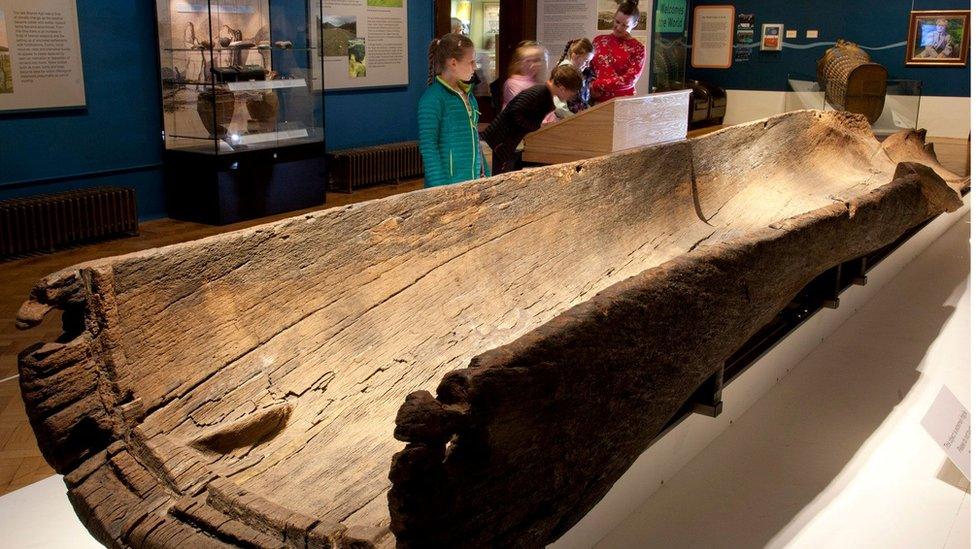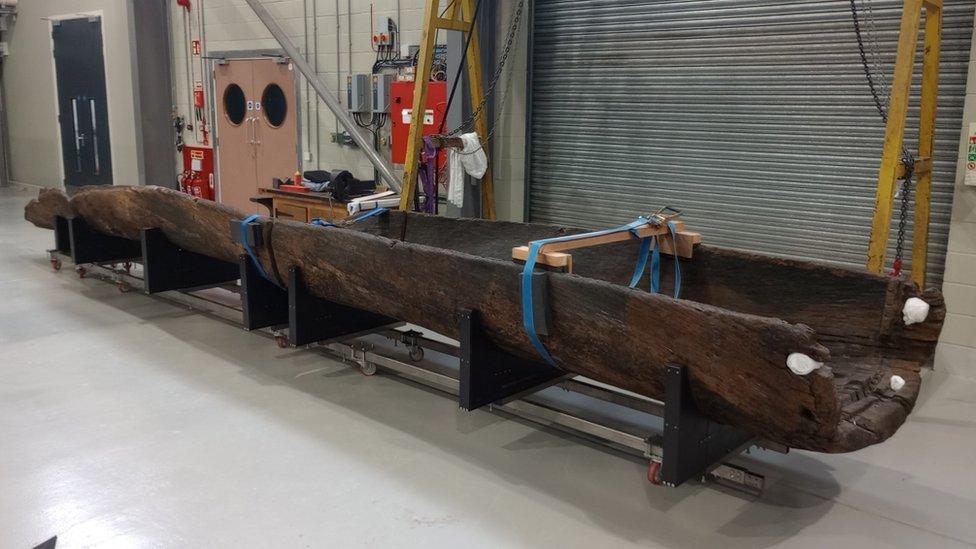Carpow logboat returns to Perth after restoration work
- Published

The logboat was previously on display at the Perth Museum and Art Gallery for 10 years
A 3,000-year-old logboat is moving back to its home in Perth after specialist conservation work.
The vessel, found on the banks of the Tay, had to be warmed up by special electric blankets as part of a year of work to repair and stabilise it.
The Carpow Logboat is one of the first artefacts to move into the new Perth Museum, which will open in spring next year.
The logboat was previously on display in Perth for 10 years.
It was first officially reported in 2001 when it was spotted in the mudflats at Carpow during a summer of exceptionally low river levels.
It was excavated in 2006 and then spent six years undergoing stabilisation and drying at the National Museums Scotland collection centre in Edinburgh.
It was acquired by Perth and Kinross Council but needed further conservation work after a decade in Perth and returned to Edinburgh for a year of work.

The logboat was restored over the course of a year at the National Museums Scotland collection centre in Edinburgh
Charles Stable, artefact conservator at National Museums Scotland, said: "Although it's large and heavy, it's also very fragile, making the conservation work rather complex.
"The wood naturally wants to relax and flatten out, so we've had to gently warm it up, making it more pliable and allowing us to reshape it.
"The small details I've noticed are incredible; footrests for the pilot, for example, which really made me think about the people who used it."
Carved from a single, 400-year-old oak tree trunk, the vessel survived due to the peaty soil composition of the Perth and Tay Estuary area.
Radiocarbon-dated to about 1,000 BC, the logboat is considered to be one of the oldest and best-preserved of its kind in Scotland.
Experts said the boat could have been used for a range of purposes, from a cargo craft, fishing vessel, a platform from which to make offerings in the middle of the river, or as a ferry for up to 14 people.
Specialist electric blankets were used as part of the treatment to warm up the wood before gently bending the fragile structure back to its original shape.
When the museum opens next year, visitors will be able to view the Bronze Age treasures of Perth as well as the Stone of Destiny, which returns to Perthshire for the first time in more than 700 years.